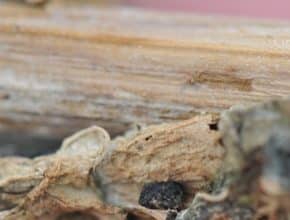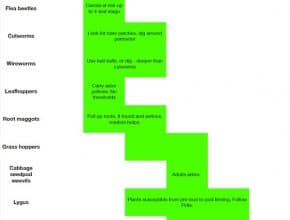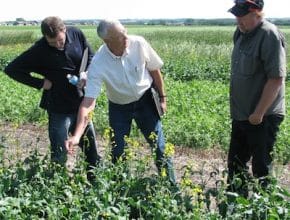Home / Canola Watch / Page 249
-
We are pleased to welcome Keith Gabert to the Canola Council of Canada as our newest agronomy specialist in the Central Alberta South territory…
-
—All areas of the Prairies are at risk. Geography does not provide immunity to this disease. —Prevalence of sclerotinia stem rot has a direct correlation to above-average moisture. If a field has regular rains or high humidity or both from two weeks before flowering and through flowering, then infection will occur. If these conditions continue after flower, severity of the…
-
In the January issue of Canola Digest, which will be in mail boxes soon, look for agronomy articles on pushing yields, on Twitter use among farmers, and on the top yield robbers of 2012…
-
The Canola Council of Canada Convention is March 14-15, 2013 at the Fairmont Hotel in downtown Vancouver. All canola growers are welcome. You don’t have to be on a provincial canola growers’ board to attend. Come for the great program and for a chance to network with leaders of the Canadian canola industry. You can even take the train. The…
-
Travel to the convention in scenic style aboard VIA Rail’s newly renovated Canadian train, all for up to 67% off regular fare…
-
Speakers booked to date include "The National" host Peter Mansbridge, Canadian entertainer in China Dashan, The Globe and Mail Ottawa bureau chief John Ibbitson, food trend specialist Dr. Elizabeth Sloan, and commodities expert Dr. James Fry…
-
Our theme this month is scouting. It’s not scouting season, obviously, but the variety of different stresses and pests in different regions that affected the crop in 2012 reminds us why it is so important to properly monitor canola throughout the year. We have articles this week on what to keep in a scouting kit and on how to find…
-
This calendar shows you the major pests and problems to look for in canola at each point in the season…
-
Growers who do not have the time for timely scouting may want to hire an agronomist to support their own scouting program. Most agronomists are also pressed for time, and may not be able to spend one to 2 hours a week scouting each canola field, but agronomists can supplement the time growers spend scouting, and provide experience and skills…






